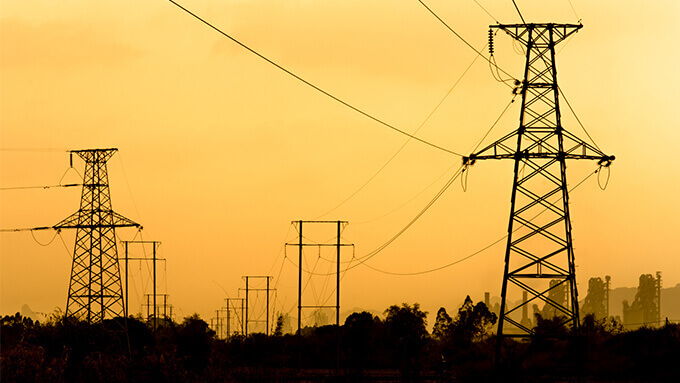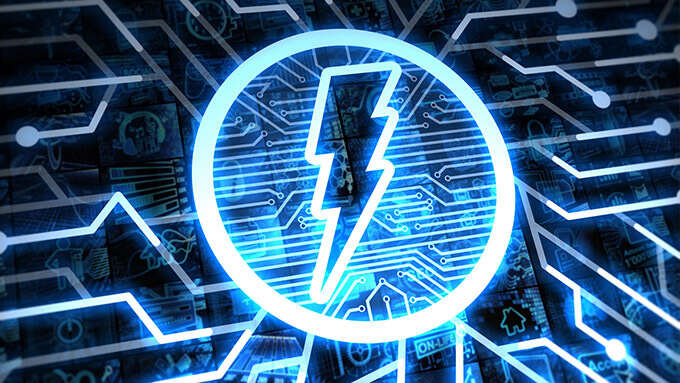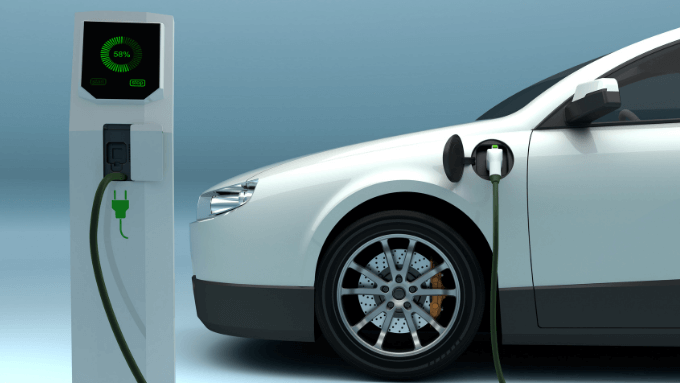Draft Regulation on Electricity Market Measurement Systems
Introduction
In the physical electricity trade, the metering of electricity plays a very important role in several respects such as (i) the metering of actual deliveries and receipts of electricity, (ii) estimation of the electricity generation and consumption in advance, (iii) determining the price payable by the parties for electricity supply, (iv) determining the price payable for the use of transmission/distribution capacity, and (v) real-time balancing of the electricity grid.[i] Hence, having a proper measurement mechanism in place plays an important role in the functioning of the electricity market as it would serve the benefit of all market participants as well as the market itself.
The technical requirements to be met by the meters in the electricity market are set out in the Communiqué on Meters to be Used in the Electricity Market.[1] Furthermore, automated meters are regulated under the Procedures and Principles Regarding the Scope of Automatic Meter Reading Systems and Determination of Meter Values.[2] On 21.06.2023, Energy Market Regulatory Authority (“EMRA”) has published a draft Regulation on Electricity Market Measurement Systems (“Draft Regulation”) for consultation.[3] The Draft Regulation contemplates establishment of a national smart metering system (“NSMS”) in line with Türkiye’s smart grid transformation project.[4] The Draft Regulation is contemplated to enter into force on 01.01.2024 and to annul the above-mentioned regulations.
In this newsletter, we will go through the Draft Regulation and explain its material provisions. It should be kindly noted that the Draft Regulation has not been officially published yet and, therefore, its provisions may be subject to changes.
National Smart Metering System
As noted above, the main provision of the Draft Regulation is the establishment of the NSMS. In this context, it is noted that the Draft Regulation places particular emphasis on standardizing the components of the NSMS. Under article 4/1 of the Draft Regulation, the meters and communication protocols should comply with International Type Approval Certification Standards (MID) or have a Type and System Approval certificate from the Ministry of Industry and Technology, and they shall be manufactured in compliance with the Draft Regulation, other relevant legislation, and smart meter technical specifications.
Article 4/2 of the Draft Regulation lists the components of the NSMS as (i) smart meters, (ii) modems, (iii) central communication software, (iv) communication protocol, (v) data concentrator, and (vi) users’ mobile application.
The third subparagraph confirms that all of the components should meet the minimum requirements to be specified in their respective specifications. Therefore, creating a nationwide network of smart meters that meet the same standards can be seen as the primary objective of the Draft Regulation.
General Principles
Article 5 of the Draft Regulation sets out the three main principles of NSMS. These are: (i) established standards (standardization), (ii) interoperability, and (iii) interchangeability. The first principle repeats the requirement of compliance with the relevant technical specifications. The second principle provides that different brands of meters, modems, central communication software, and data concentrators approved by the authorized testing institutions should be able to operate as a whole single system. Finally, according to the third principle, when the system is in regular operation, components manufactured by different manufacturers can be used to replace other components while the system remains operational and without any revisions.
Types of Smart Meters
According to Article 6 of the Draft Regulation, there are two main types of smart meters: (i) ECO meters and (ii) PRO meters. ECO meters are active electrical energy[5] measurement meters and they can be single-phased or triple-phased. In addition to basic meter functions, ECO meters have one RS485 output only as a communication port.
As the name suggests, PRO meters are more advanced. PRO meters are divided into three: single-phased, triple-phased, and combi (i.e. active/reactive) meters. Single-phased and triple-phased meters can be equipped with a modem and can communicate via the central communication software, in addition to their basic meter functions. Combi meters measure reactive electricity in addition to all these features. PRO meters can, optionally, feature cut-off/turn-on, neutral measurement, bidirectional energy measurement, and measurement of technical quality parameters. Finally, the minimum requirements of the transformers to which the meters in the Draft Regulation will be connected are regulated under Article 7 of the Draft Regulation.
As per article 20/2 of the Draft Regulation, PRO meters are required in the following circumstances;
The meters that measure electrical energy supplied to or withdrawn from the transmission system.
- The meters that measure electrical energy withdrawn from the distribution system by the consumption units of distribution license holders.
- The meters that measure electrical energy supplied to the distribution system by generation license holders.
- The meters that measure electrical energy exchanged between two distribution grids.
- The meters that measure electrical energy at the connection points of the consumption facilities qualifying as balancing units.
- The meters that measure electrical energy supplied to and withdrawn from the electricity storage unit within an electricity storage facility, an electricity storage unit integrated into the generation facility and stand-alone electricity storage facilities.
- Existing meters with annual consumption over 10 MWh. At least one existing/newly installed meter in residential/commercial premises with at least 10 independent sections.
Meters for Unlicensed (License-Exempt) Plants
Article 13 of the Draft Regulation makes a special provision regarding the meters to be used in electricity generation facilities under the Unlicensed (License-Exempt) Generation Regulation in the Electricity Market[6]. According to this article, the meters to be used in such facilities shall comply with all requirements of the Draft Regulation and Electricity Market Balancing and Settlement Regulation[7]. If the generation and consumption facilities are located in the same place, a bidirectional meter shall be installed at the place specified in the connection agreement. If the generation facility is not located in the same place as the consumption facility, a bidirectional meter for the generation facility and unidirectional meter for the consumption facility shall be installed at the places determined in the connection agreements of the relevant facilities.
The Draft Regulation states that, for bidirectional meters, a second meter can be installed for control purposes by distribution license holders and TEİAŞ. Furthermore, a measurement system is to be installed at the unit output points of unlicensed production facilities to monitor the relevant production. Hence, it is possible to say that a special focus was given to the electricity generation of the unlicensed production facilities. This is in line with the EMRA’s approach regarding the strict enforcement of self-consumption principle.[8]
Responsibilities of the System Participants
The Draft Regulation also defines the system participants’ responsibilities in connection with NSMS. Such responsibilities include actions to be taken in connection with the establishment of NSMS, transferring of data obtained, and settlement transactions in the electricity market. As can be anticipated, the majority of the responsibilities are to be fulfilled by the distribution license holders. However, the Draft Regulation also contemplates certain responsibilities that are to be fulfilled by Türkiye Elektrik İletim Anonim Şirketi (“TEİAŞ”).
Establishment of NSMS
As per Article 8, it is the responsibility of the distribution license holders to include the meters connected to the distribution system in the scope of NSMS, to install, operate, and maintain the necessary equipment, infrastructure, and smart meters for communication, and to replace the existing meters with smart meters. As for meters connected to the transmission system, this responsibility belongs to TEİAŞ.
The Draft Regulation also clarifies that ownership of the smart meters installed for electricity energy measurement belongs to the relevant system operator (i.e. relevant distribution license holder for distribution grid; TEİAŞ for transmission grid).
NSMS Mobile Application
The distribution license holders are also required to establish a mobile application to enable the users to track certain information, to see certain analyses on their historical data, and to provide feedback. The distribution license holders are required to make the mobile application available to users, operate it, and ensure data security of the mobile application. Such application shall, to the extent the capabilities of the relevant user’s meter allow, at least have the following features:
- Users will be able to see their real-time consumption and/or production as well as for certain periods, and visually view certain analyses of their historical data.
- The application shall work on all mobile platforms.
- It will show the average daily and monthly consumption.
- In case of unexpected excessive consumption, it will alert the user as to the possibility of leakage.
- It will be able to control consumption within the limits defined by the users and make the necessary warnings.
- Meter shutdown periods will be defined and a warning will be given when consumption occurs.
- Users will be able to compare their consumption with the average consumption of similar users in the relevant region.
- Users will be able to view the total duration and number of outages for the current year and the previous year, as well as the start and end time and duration of each outage.
- It will instantly inform the user via the application about notified and unnotified interruptions affecting the relevant user in the distribution system.
- Users will be able to view data on technical quality parameters.
- Users will be able to send their complaints and requests regarding electricity failures to the relevant institutions through the application.
Finally, as per provisional Article 3 of the Draft Regulation, the mobile application should be established by the distribution license holders until 01.01.2024. That being said, the Draft Regulation does not provide a deadline for the remainder components of the NSMS. Hence, it is possible to say that the transition will be carried out gradually, in compliance with the priority list in Article 20.
Transmission of Data
In addition to the above, the Draft Regulation also establishes the distribution license holders’ and TEİAŞ’s responsibilities in terms of securely transmitting the data obtained from NSMS. Article 10 sets out the latest date for sharing such data based on whether the relevant facilities are balancing units or not. In this vein; the 15-minute production or consumption values (as the case may be) of the generation and consumption facilities and electricity storage units or facilities that are balancing units should be shared with the market operator[9] 2 hours after the relevant hour. As for generation facilities and electricity storage units or facilities that are not balancing units; 15-minute production or consumption values (as the case may be) shall be shared with the market operator within 2 hours following the end of the relevant day. As for the rest of the meters, the settlement period-based values shall be shared with the market operator until the last day defined in the settlement calendar of the relevant month.
The Draft Regulation also provides that TEİAŞ, the distribution license holders, and the market operator shall ensure that the system has a real-time communication infrastructure with the MMS[10].
Conclusion
The establishment of a standardized smart metering system is an important milestone in Türkiye’s smart grid transformation project. The provisions of the Draft Regulation will increase the transparency for the market participants and offer a more efficient mechanism for managing the invoicing procedures. This would serve to the benefit of all market participants, especially those undertakings having a large number of electricity consumption facilities around the country. It will also benefit those having unlicensed (license-exempt) electricity generation plants. The increased level of transparency and simplification may increase the demand-side participation in the electricity market.
- Mäntysaari, Petri: EU Electricity Trade Law: The Legal Tools of Electricity Producers in the Internal Electricity Market, Finland, Springer, 2015, p. 51.
- Published in the Official Gazette dated 22.03.2003 and numbered 25056.
- Published in the Official Gazette dated 08.08.2015 and numbered 29439.
- About the Opening of the Electricity Market Measurement Systems Regulation for Consideration https://www.epdk.gov.tr/Detay/Icerik/5-13056/elektrik-piyasasi-olcum-sistemleri--yonetmeligin (Date of Access: 16.09.2023)
- Turkey Smart Grids 2023 Vision and Strategy Determination Project https://www.akillisebekelerturkiye.org/ (Date of Access: 16.09.2023)
- The difference between active and reactive energy is a rather technical issue and outside the present author’s area of expertise. In a good faith attempt to describe the difference, active energy is the part of the current which is consumed by the electrical tools, appliances, etc. The rest of the electricity is reactive energy.
- Published in the Official Gazette dated 12.05.2019 numbered 30772.
- Published in the Official Gazette dated 14.04.2009 numbered 27200.
- For more details regarding the principle of “self-consumption” See: Kaşka, Rüştü Mert: Important Amendments to the Regulation Concerning Unlicensed Electricity Generation in the Electricity Market, Erdem & Erdem Newsletter, 31.08.2022 (https://www.erdem-erdem.av.tr/en/insights/important-amendments-to-the-regulation-concerning-unlicensed-electricity-generation-in-the-electricity-market)
- Market operator is Elektrik Piyasaları İşletme Anonim Şirketi.
- MMS is the Market Management System operated by EPİAŞ whereby financial settlement of supplied electricity is being carried out.
All rights of this article are reserved. This article may not be used, reproduced, copied, published, distributed, or otherwise disseminated without quotation or Erdem & Erdem Law Firm's written consent. Any content created without citing the resource or Erdem & Erdem Law Firm’s written consent is regularly tracked, and legal action will be taken in case of violation.









